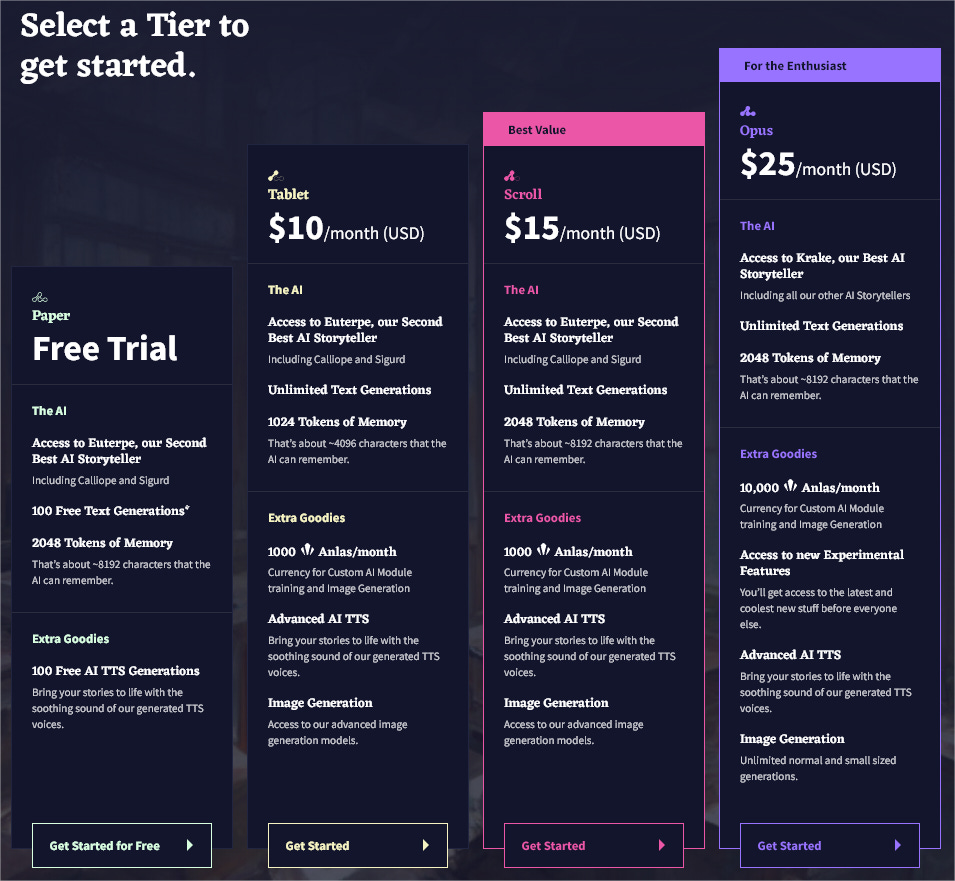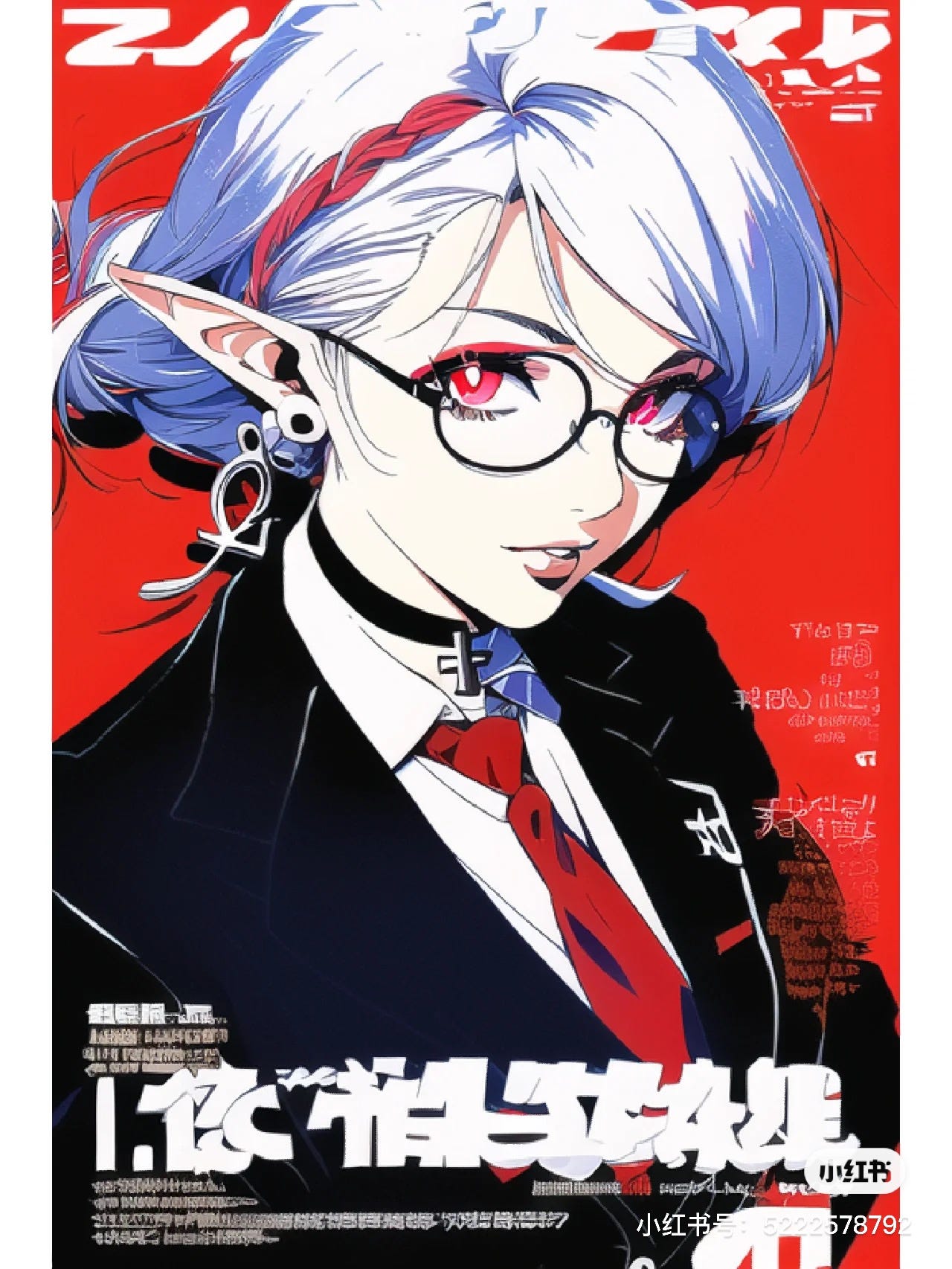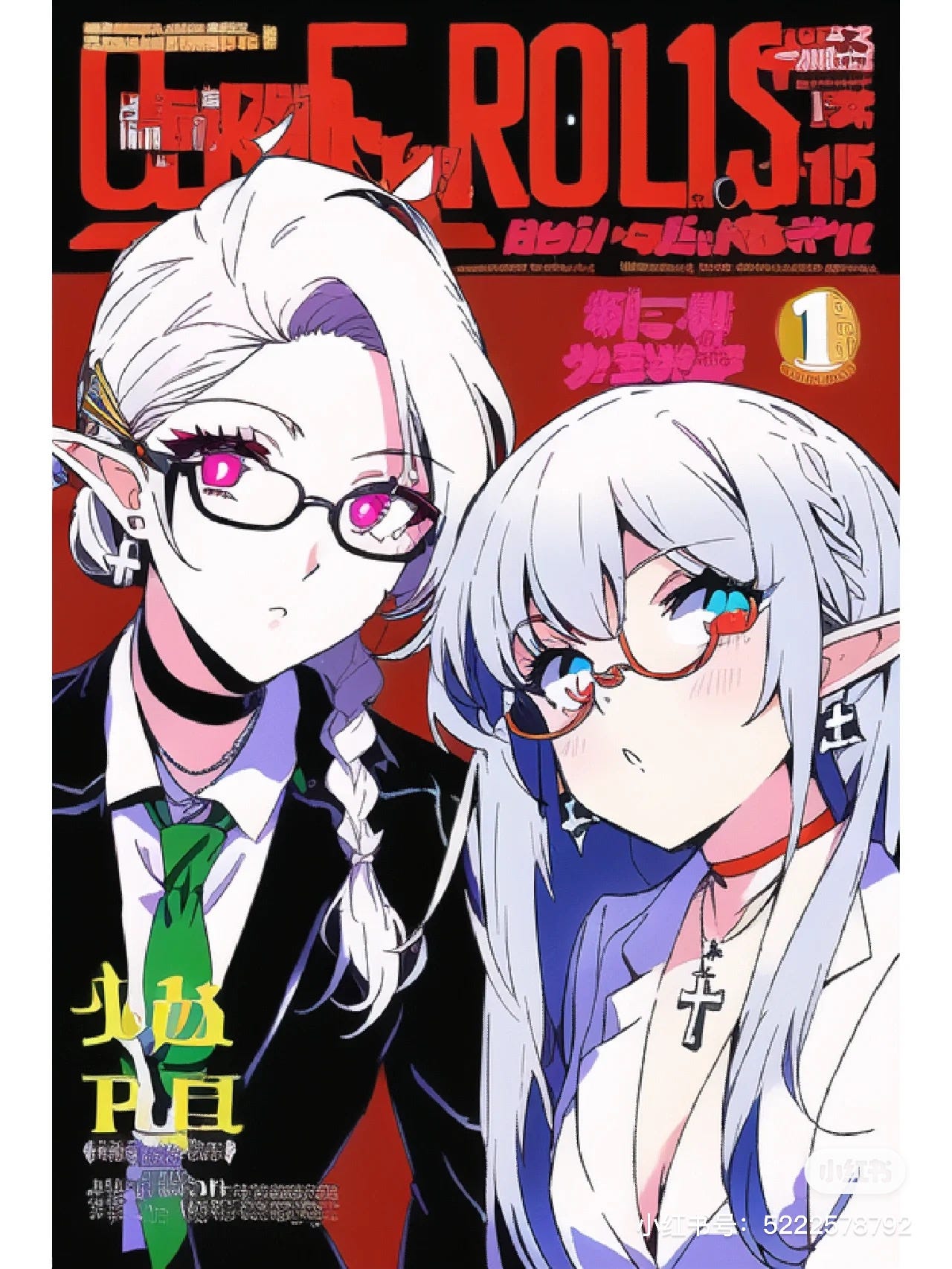A Brief User Journey from AIGC
Thoughts on the commercialization and web3 potential of AIGC
Thanks to Siena (@whysiena.eth), Cheese (@sunyuqian1997), and Hyacinth (@ring_hyacinth) for lending a hand and leading me on the way >3
1. Why do I start this topic?
In the last two weeks, I've been trying out mainstream AI image generation products including Midjourney, Nijijourney, Lexica, and NovelAI to help illustrate my latest research report, and found that the current business model is dominated by a free trial + subscription, but only NovelAI image generator needs tokens to start, which aroused my curiosity.
As I said in a tweet earlier, the most interesting element of AIGC's business model is that the AI attracts people to click the "Generate" button again and again, as an innovative Gocha. Following this logic, I guess pay-per-use (like the coin-operated arcades in the 60s-80s) would improve user experience and company revenue more than subscriptions. So I want to know more about how AIGC's products are charged to users.


2. Token
Since NovelAI's main service is a novel generation, and the image generator is just a new feature, its main business model is still subscription-based, but there is a special token for the image generator called "Anlas".
Users who subscribe to the main service can get some "Anlas" for free to use and can purchase more separately. However, those who do not subscribe to the service (or use the gift key subscription) cannot buy Anlas separately, which is probably one of the reasons why NovelAI is still relatively niche in the AIGC boom (no free trial). Of course, there are other reasons, such as NovelAI being perhaps more targeted at professionals (I will explain below).
The general use of tokens is to charge users very finely depending on the size / dpi of the image, generating a single image consumes roughly 3-6 Anlas tokens. As I dive deeper, I also found people on Reddit mentioning that they hadn't used NovelAI for two months and found some Anlas in their accounts, which means token is used not just for consumption, but as a reward to recall users back (and potentially to increase retention).
So, I start looking for more examples of AIGC tokenization and found Tiamat, a Chinese AI image generator, which clearly owns the characteristics of Chinese application commercialization design with a free trial + token reward (Eg, the user can get 500 tokens for free and 70 tokens on the next few days, as well as fees that vary by the image quality.) However, after Stable Diffusion was open-sourced, a large number of free AI image generation appear in China, many of which do not have independent and complete engines, making it difficult to sustain operations in the Chinese market for the long term with fierce price competition.
This finding verifies my guess that users demand more accuracy from the product, whereas a generalized subscription (especially the payment to decrease generating latency and waiting time) is based on a negative experience that makes it unpleasant for users; so that token commercialization is more suitable for AIGC products to meet some refined requirements, but whether they can remain competitive still depends on the unique barriers of the products.
NovelAI, for example, has some features that benefit professional creators and leverage tokens better than general AI image generators:
1) Feed seeds to generate images with more personalized styles. Each additional seed costs more Anlas. The results generated by prompts are often not precise enough, even adding the prompt like "Anime" and series artists’ names, it’d still be not feasible if I want to specify a style with personalization like Persona5.
(AI Artist: 七七 at Xiaohongshu)
2)Feed seeds to generate images with more accurate pose and composition. Each additional seed costs more Anlas. when generating battle scenes, AI cannot fully understand the grammar in the prompt, leading to subject misplacement and confusion, but NovelAI's feed picture function is able to clarify the position and specific composition of subjects in an image without spending time adjusting the sequence or weight of prompt (This is where I wasted most of my time…).
3)Multi-task mode - each additional task costs more Anlas - novels, illustrates, text adventures - a complete text adventure game.
Unlike many AI image generators, which increase the number of image-generating tasks (Eg, an upgrade plan in Midjourney generating 12 images), NovelAI can generate images at the same time as the user writes the novel, then the user can pick the right pairing when completes a paragraph. Meanwhile, NovelAI simultaneously performs the third task, generating a text adventure. In this way, a complete workflow of a text adventure game can be completed with minimal latency in time and cost of labor in one generator. (To be honest, when I finish the paragraph, I use three AI image generators and two translators at the same time for the illustrations……)
3. Royalty and Privacy
Users can choose to keep images private in Lexica’s subscription:
Users can choose if they want to public the prompt:
But in general, privacy and royalty are very weak in the commercial model of AIGC, perhaps because of the inadequate traditional privacy and royalty protection.
Therefore, what is the web3 approach to monetizing privacy and royalty? After all the royalty issue is something that the NFT public marketplace has been addressing for the last half year.
Recently, we saw Mainfold add a new feature called Marketplace Blocker, which allows creators to choose which public markets the NFT can be traded on. This update is mainly to counteract OpenSea's policy on royalties. Previously, most public marketplaces adopted a more modest strategy to allow creators to customize royalties, and the opt-In programmable royalties by Limit Break is also one of these.
In fact, creators can set their own royalties when they create the smart contract of ERC721, but this is not an easy move for most artists. The first example I know is from a team called Timeleaf Industry, who defined token addresses in their DEX smart contract that could interact with their on-chain assets so that all on-chain assets could only be traded on the internal market, and only special assets could "exit". So in fact, the creators could have created their own Marketplace and taxation mechanism, deciding which markets ERC721 could be traded in or specifying that transactions fail when the royalty fee falls below a certain value.
I feel that with more and more developers trying to modify smart contracts to protect their rights, creators are no longer tied to platforms. As the NFT royalty system becomes more complete, AIGC should be an important testing ground due to its controversy over copyright and its powerful function.
Some of the use cases I imagine:
1) Seed picture (artificial or AI): the higher the quality of the picture, the more universally it will be used in future AI picture generation, the more frequently it will be adapted by users, then the higher its use price will be.
The smart contract automatically sends a portion of the token to the creator's wallet, and as seed images become more widely used, creators get a bigger share. Because blockchain can be well traced, creators may be able to receive royalty shares for images that are generated multiple times, rather than just once their work is used. Of course, if there is an infringement, the award can be suspended directly through the whistle-blower and review mechanism until the review is complete, and the smart contract can even pay the fin directly if the infringer has a native token in his account.
Also, it makes sense for human artists to be able to upload high-quality images and make a profit. The composition and detail of a human artist are often better than that of an AI-generated work, and it would take an AI artist a considerable amount of time and effort to produce a similar image, so the pay and return should be comparable.
2) Prompt: In different AI image generators, the sequence and combination of prompts will affect the results to varying degrees. Content related to prompt composing has been shared, sold, or even sold as courses on some external sites, but creators who use the AI picture generator won't benefit from their prompt.
The smart contract will call the user's wallet to check if there’s a native token every time a copy is made on the front end, and automatically charge when the user pastes it (if the user has signed to approve already). Wallets and charges are also invoked if the user wants past the prompt on an external site: if the user doesn’t have an account and native token of the website, part of the service fee will be added and then settled with USD. (I'm guessing it can be done, as there are many content apps in China that do this by popping up login and payment Windows when you copy.)
In this way, whether users choose to share prompts or not is a matter of whether sharing profits from the ecosystem, and more users probably would like to participate in this process. Also, prompt calls are related to the quality of the seed image, which still rewards good creators.
4. Final Words
I know that the drastic commercialization of many products using NFT/FT leads to severe grinding problems like some social products, but 1) AIGC needs a new business model, and 2) blockchain has more advantages in traceability and copyright protection, as well as the access to global liquidity, so it deserves in-depth discussion and careful innovation.
Even if it has nothing to do with commercialization, the idea of an AI-generated text adventure + fully on-chain game engine + Game Maker also excites me. Game Maker also reminds me of Terraria, Minecraft, and Roblox, and all the possibilities of magic experiences generated by users (like To the Moon).
In addition, the GPU-based commercialization of AIGC products also reminds me of an AI programming game called Screep: World, whose design of GPU consumption is also very worthy of reference for all full-chain games (TPS-based commercialization) and AIGC products.
These design ideas keep hanging over in my head, and I'm eager to see what new products can tease them out and put them together.
I'm just brainstorming here and coming up with some half-baked ideas. If you are also interested in this topic, my DM's open and welcome to jam on ideas (https://twitter.com/0xAikoDai).






